Ballet
Nouvelles+
20 Things to Watch for in Frame by Frame
by John Hart
1 juin 2023
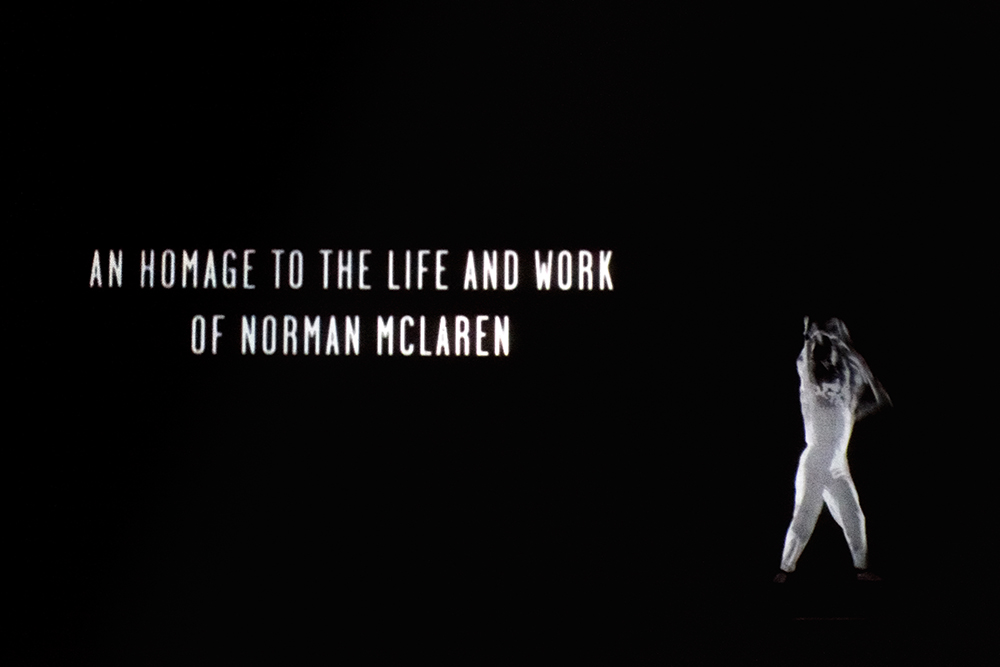
In their homage to the life and works of Norman McLaren, Robert Lepage and Guillaume Côté highlight key dates, films and collaborators of the pioneering animator. Here is more information on the details, titles and names that appear in Frame by Frame.
1/ The Title
Frame by Frame is a reference to the production of some of McLaren’s films. When he painted film cells and/or etched the visuals, music or sound into the film strip, McLaren did so by hand one frame at a time. The process for a 4-minute film could take up to a year of patient, precise and painstaking work.
2/ Leapfrog Tests
In the introduction of Frame by Frame, Lepage and Côté reference McLaren’s “leapfrog tests”, a series of experiments in 1961 of using a stroboscopic effect. McLaren and Grant Munro took turns walking, running and playing leapfrog. In printing, the image was delayed or staggered. McLaren said, “in some cases the image repeated itself 34 times giving a fantastic ‘visual flow’”. He loved the experiments but didn’t have a theme until seven years later when he created Pas de Deux.
3/ London 1936
McLaren was born in Scotland and attended the Glasgow School of Art for set design. While a student, he began experimenting with film; because he didn’t have a camera, he etched and drew directly on film strip. Two of his films won awards at the Scottish Amateur Film Festival where John Grierson was a judge. Grierson, head of the UK General Post Office film unit, hired McLaren, prompting his move to London in 1936.

Norman McLaren. Guy Glover. John Grierson. Photos courtesy of the National Film Board.
4/ Guy Glover
Glover was born in London, UK, and his family moved to Canada when he was three years old. He attended the University of British Columbia and was a poet, actor and theatre director. Glover and McLaren met at Covent Garden in London in 1937 and were life partners for 50 years, until McLaren’s death in 1987.
5/ New York 1941
In 1939, on the eve of World War II, McLaren and Glover moved to New York City, assisted by a grant from the Solomon Guggenheim Foundation. He animated films, painting directly on film, including Stars and Stripes (1940). McLaren was reunited with Grierson in 1941.
6/ John Grierson
In 1941, Grierson was Canada’s first Government Film Commissioner. He invited McLaren to work for the National Film Board, with a mandate to create an animation studio and to train Canadian animators. McLaren recruited students from the École des beaux-arts de Montréal and the Ontario College of Art. In janvier 1943, Studio A, the NFB’s first animation studio, was formalized, led by McLaren.
7/ Five for Four
This 1942 film was one of McLaren’s war-time projects, commissioned by the War Savings Committee. Both the foreground figures and background scenery were painted and then merged. The ballet uses the moving background scenery in this scene.
8/Oscar Peterson
For Begone Dull Care (1949), McLaren and frequent collaborator Evelyn Lambart painted vivid colours onto filmstrip inspired by and choreographed to jazz music created by Peterson for the film and played by the Oscar Peterson Trio.
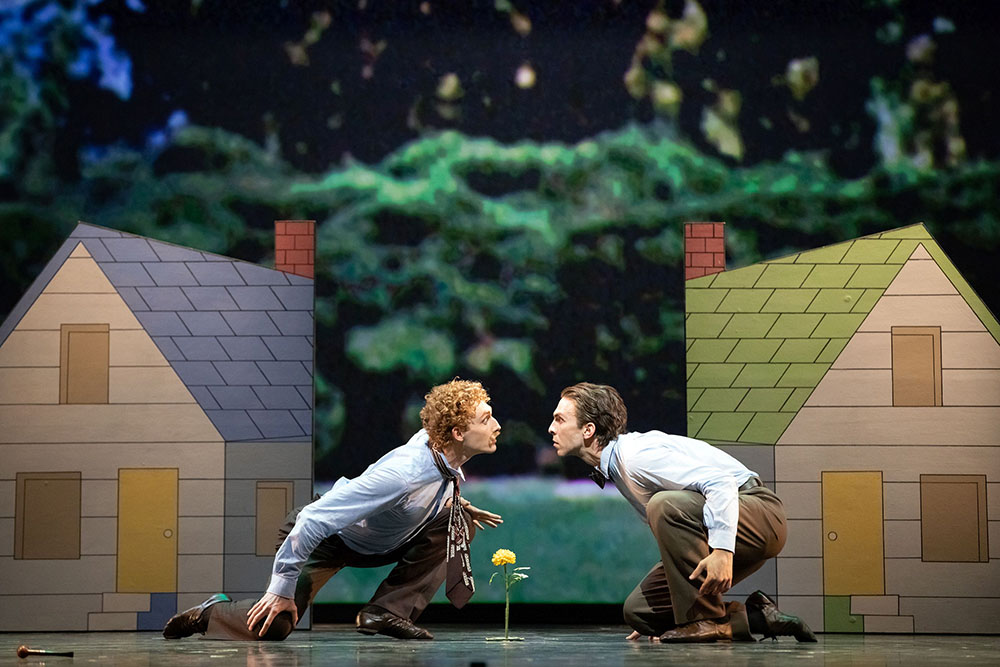
Former Principal Dancer Skylar Campbell and Former First Soloist Dylan Tedaldi in Frame by Frame. Photo par Karolina Kuras.
9/ Neighbours
In 1951, McLaren wanted to create a parable about war. With only an idea, he and his cameraman (Wolf Koenig) and two colleagues who appeared in the film – Grant Munro and Jean-Paul Ladouceur – created Neighbours over the course of six months. McLaren was experimenting with single frame animation, typically used for drawings or puppets, but with live actors instead. He also created the synthetic soundtrack by painting on the film. The National Film Board met a lot of resistance when trying to screen the film, but Neighbours became extremely popular after it won the 1952 Academy Award for Best Documentary, Short Subject, the NFB’s second Academy Award.
10/ Maurice Blackburn
Blackburn, who worked at the NFB from 1942 – 1978 as a composer, conductor and sound editor, is best known for his soundtracks for animated films. A frequent collaborator of McLaren’s, they developed techniques to etch sound directly onto film. For Lines Vertical (1960), McLaren and Lambart ruled moving lines directly onto film, set to an original composition by Blackburn who recorded himself on electronic piano.

Evelyn Lambart. Maurice Blackburn. Grant Munro. Photos courtesy of the National Film Board.
11/ René Jodoin
McLaren invited Jodoin to join the NFB in 1943. During a varied career as an animation director and producer, he founded the NFB’s French Animation Studio in 1966. McLaren and Jodoin collaborated on two short films, including the abstract Spheres (1969), set to music by Bach played by Glenn Gould.
INTERMISSION
12/ China
McLaren worked with UNESCO in the 1950s and 1960s to teach film and animation techniques in China and India. His time in China during the beginning of the Korean War inspired the idea for Neighbours.
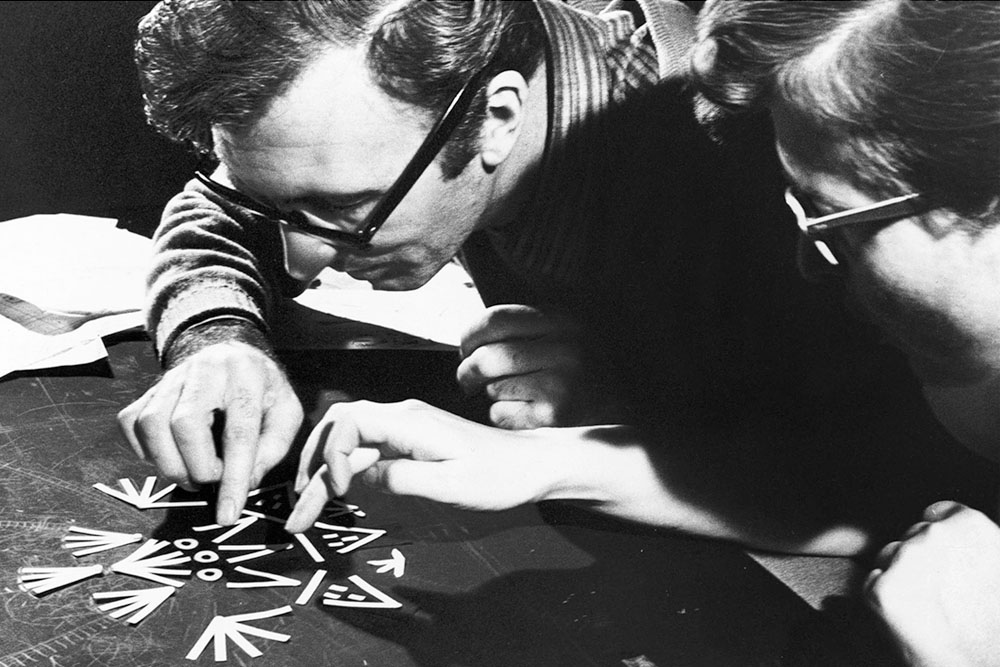
Norman McLaren and Evelyn Lambart during the making of Le Merle. Photo courtesy of the National Film Board.
13/ Montreal 1958
McLaren and Evelyn Lambart collaborated on a short film set to a French-Canadian children’s song. Le Merle (1958) features white cut-outs to create the blackbird of the title, shot in single-frame animation over pastel backgrounds, most of which were painted by Lambart.
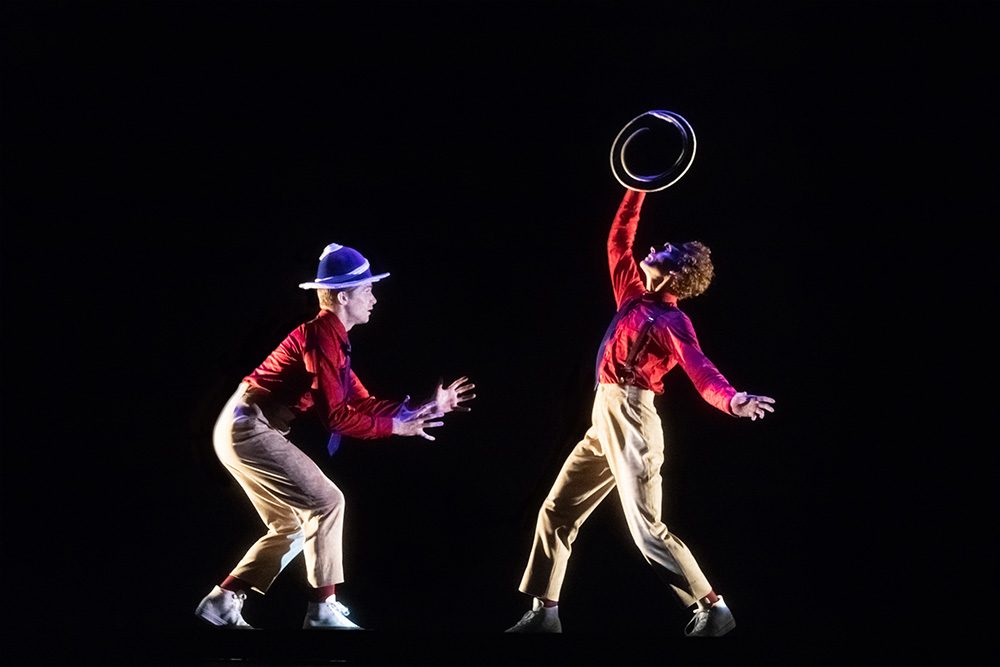
Harrison James and Former Principal Dancer Skylar Campbell in Frame by Frame. Photo par Karolina Kuras.
14/ Canon
In Frame by Frame, Lepage and Côté replicate the last section of Canon (1964), a film in three parts by McLaren and Munro. Using an actor and an example of a musical canon, McLaren and Munro sought to illustrate the structure of the musical form: a lead melody and a follower (which repeats the melody after an interval, like a round, or includes a slight transformation).
15/ Evelyn Lambart
Lambart was one of McLaren’s earliest recruits to the NFB in 1942. As a child, she experienced major hearing loss; as a result, she turned to painting and drawing. As the first female animator at the NFB, she was known as the “First Lady of Canadian animation.” She was a frequent collaborator of McLaren’s, often the pragmatic and methodical partner to McLaren’s creative “dreamer.” Anecdotally, all the men of the NFB highly respected her because they realized that she knew much more than them.
16/ Synchromy
“What you see is what you hear and what you hear is what you see.”
McLaren developed an optical technique that synchronized image and sound. He photographed a series of rectangular cards on which he had drawn lines. Organizing these cards for the soundtrack, he created a series of notes and chords. He then used the same cards in the same order for the visuals, choosing different colours for the shapes. Therefore, in Synchromy (1971), what the audiences sees and hears is essentially the same.
17/ A Chairy Tale
Another collaboration of McLaren and Lambart, this short narrative film (1957) features a man who wants to sit and a chair which is at turns disobedient, playful, needy and cooperative. When Ravi Shankar, a sitar player, and Chatur Lau, a tabla player, arrived in Montreal for a televised recital, McLaren showed them the edited film and asked them to compose the soundtrack.

Rene Jodoin. Oscar Peterson. Ludmilla Chiriaeff. Photos courtesy of the National Film Board.
18/ Ludmilla Chiriaeff
Ludmilla Chiriaeff was a Latvian-Canadian whose family escaped WWII through Switzerland and immigrated to Canada in 1952. A trained ballet dancer, Chiriaeff opened a ballet school in Montréal and choreographed dances for French television (in total, she created more than 300 ballets for television and stage). She founded Les Ballets Chiriaeff in 1957, a troupe that achieved international prominence during the Expo 67 World Festival. The troupe evolved into Les Grands Ballet Canadiens. McLaren asked Chiriaeff to choreograph a pas de deux for his 1968 film.
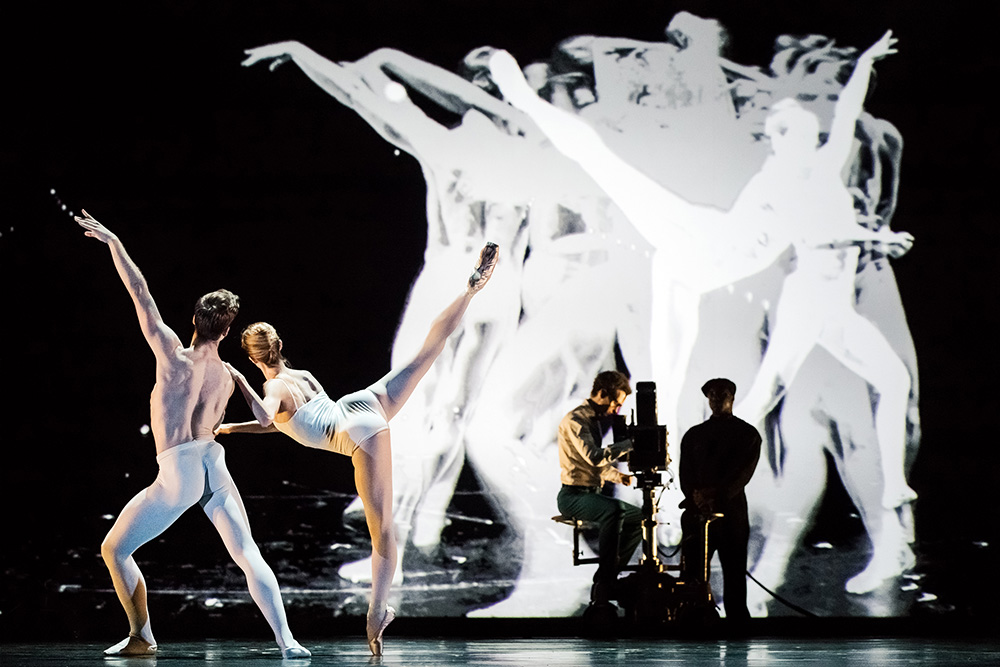
Harrison James et Heather Ogden dans Frame by Frame. Photo par Karolina Kuras.
19/ Pas de Deux
McLaren’s fascination with movement is threaded throughout his oeuvre, though he didn’t apply his passion for dance to his work until his later life. He created Pas de Deux in 1968, the best-known of three films McLaren created to celebrate ballet. Dancers Margaret Mercier and Vincent Warren were shot in high contrast and the film was printed in a step-and-repeat format to multiply the images. The effect is a hypnotic, sensuous and loving ode to ballet. With today’s technology, Lepage and Côté are able to reproduce the effects in real time, creating a stunning and dream-like climax in Frame by Frame.
20/ Finale
Although McLaren died in 1987, his influence on animation, his love for experimentation and collaboration and his belief in the artists’ voice (however idiosyncratic) live on.
In 2014, the centenary of his birth, the city of Montréal projected films inspired by McLaren’s works on landmarks within the Quartier des Spectacles, an event that inspired Lepage to engage more deeply with McLaren’s life and legacy and sparked an idea...
Frame by Frame is onstage 2 juin — 11. En savoir plus
